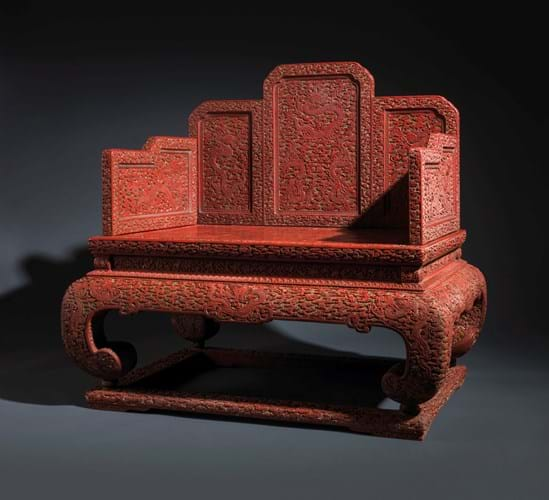The 3ft 10in (1.15m) wide Qianlong (1736-95) three-colour lacquer throne came to auction from a private Asian collection where it had been since it was acquired in Hong Kong in 1997.
The rarity and quality of the colouring and carving meant it merited a catalogue of its own.
Perhaps 150 coats of lacquer were applied then carved to achieve the three-colour effect that was typically reserved for the imperial household.
Carved with nine dragons, it was similar in design, both quality and construction to another in the Palace Museum.
The fact that nine dragons were featured is significant – nine was regarded as particularly auspicious and also the number symbolising the supreme power of the emperor.
Estimated at £800,000-1.2m, it was knocked down at £5.2m.
‘Focus of attention’
As in other cultures, thrones were of immense importance in China in emphasising power and majesty of the ruler. In the Qianlong court, such a throne, together with its accompanying screen, provided a setting by which the emperor’s person was rendered more imposing.
According to the Christie’s catalogue, they ensured the emperor was “set apart from those who sought audience but the focus of attention for all”. It continues: “Thrones were undoubtedly the most important items of furniture in the palace in terms of reinforcing the position of the ‘Son of Heaven’.”
The archives of the Imperial Palace note that in December 1744, the Qianlong Emperor ordered that a carved lacquer dragon throne should be placed in the Chonghua gong, the Palace of Doubled Glory. In March the following year the Qianlong Emperor ordered a matching throne screen to stand behind it, despite the fact that the throne was not in the best condition.







